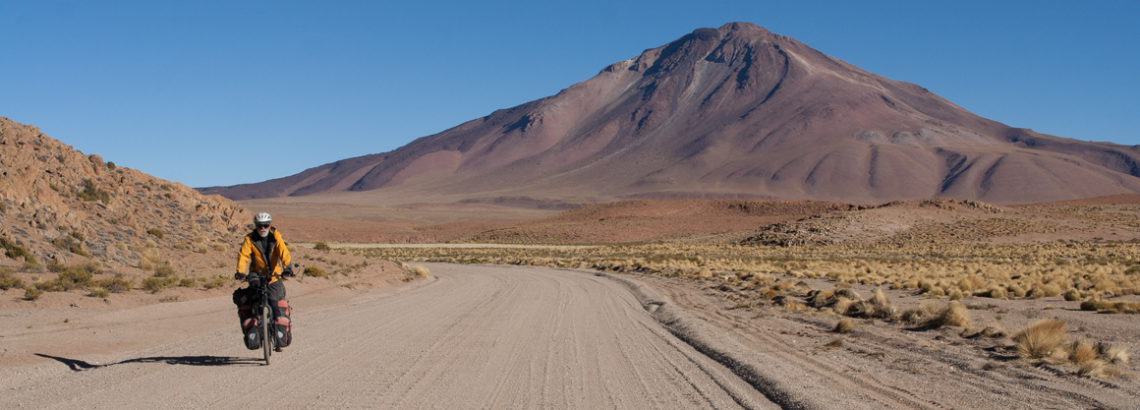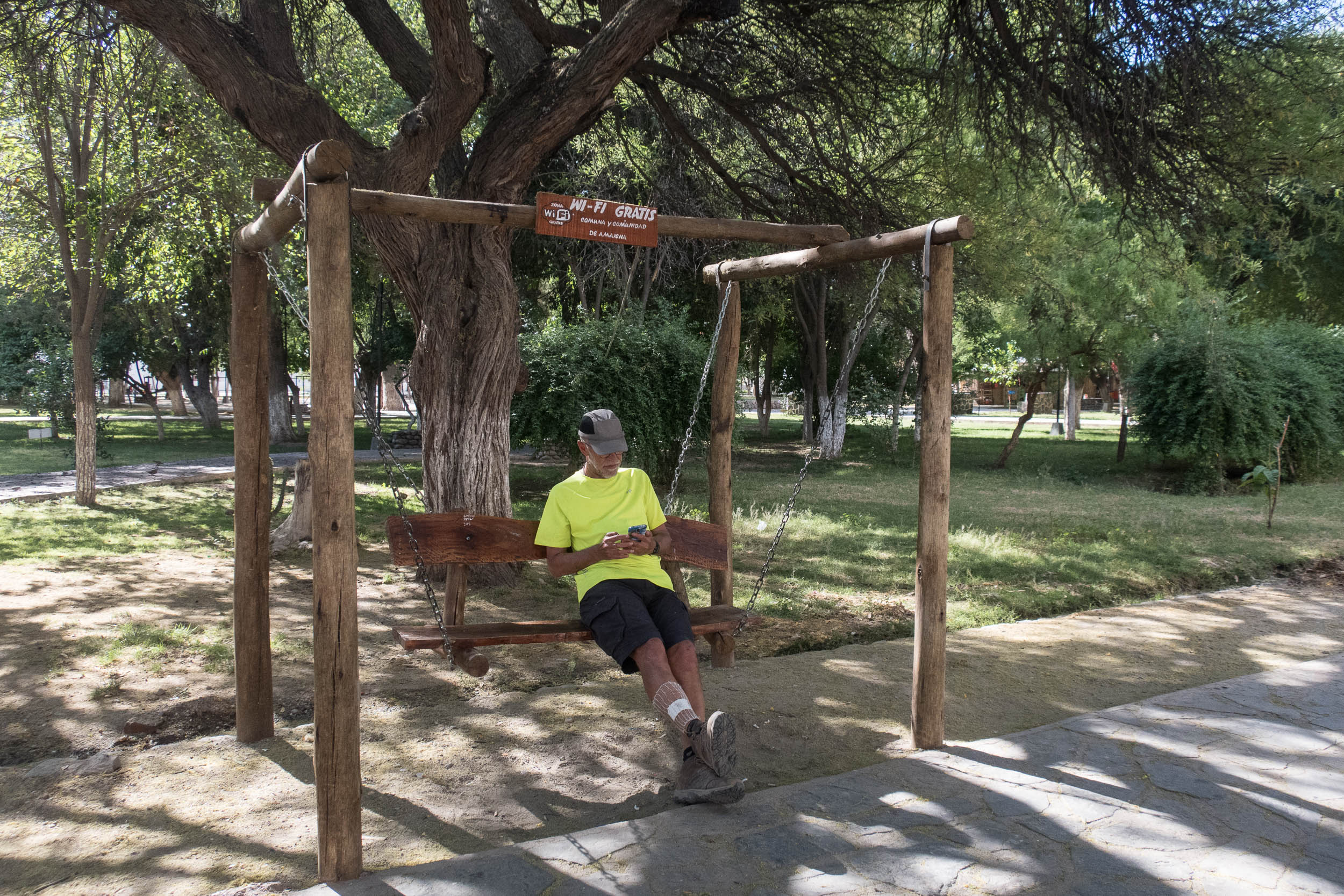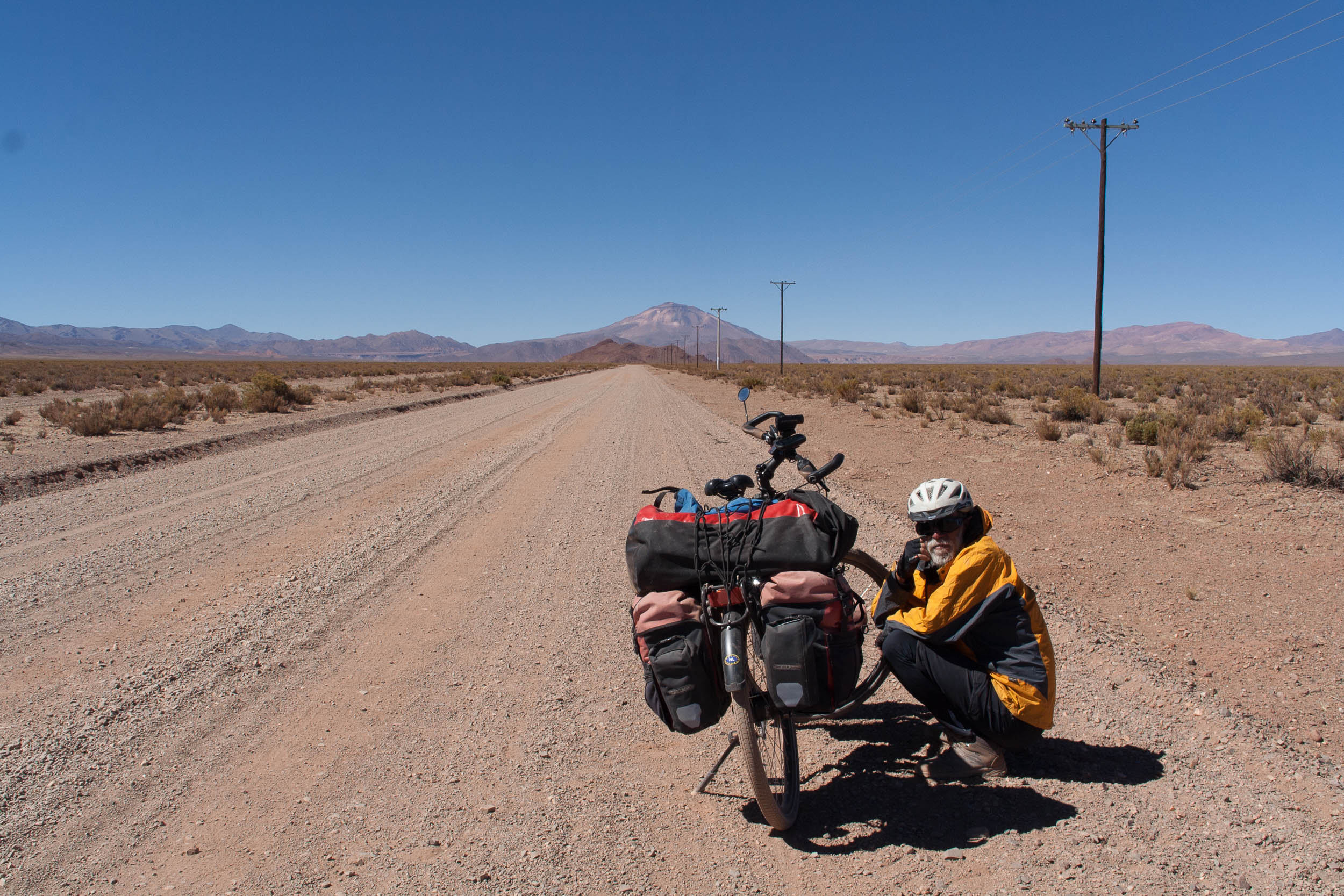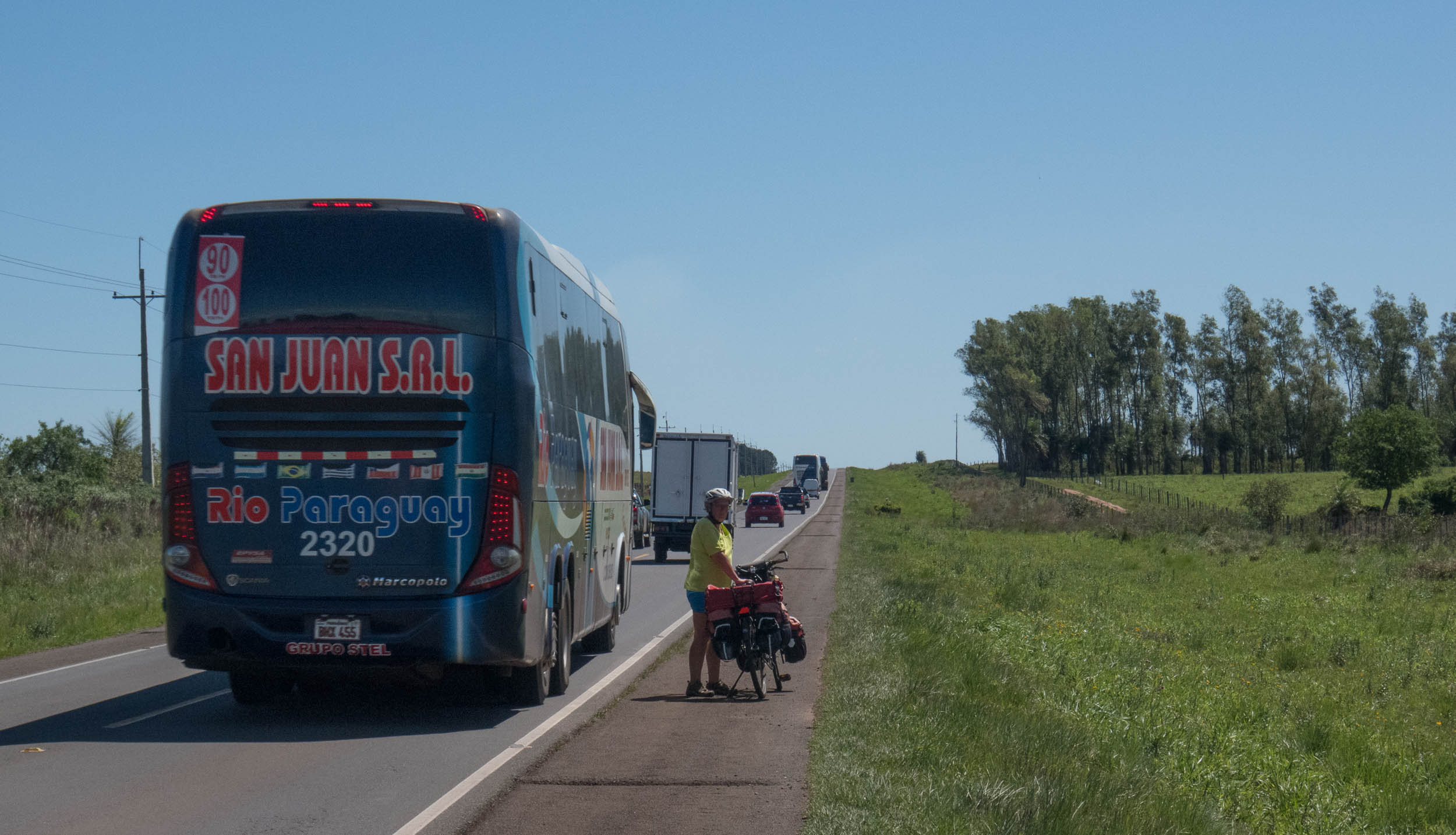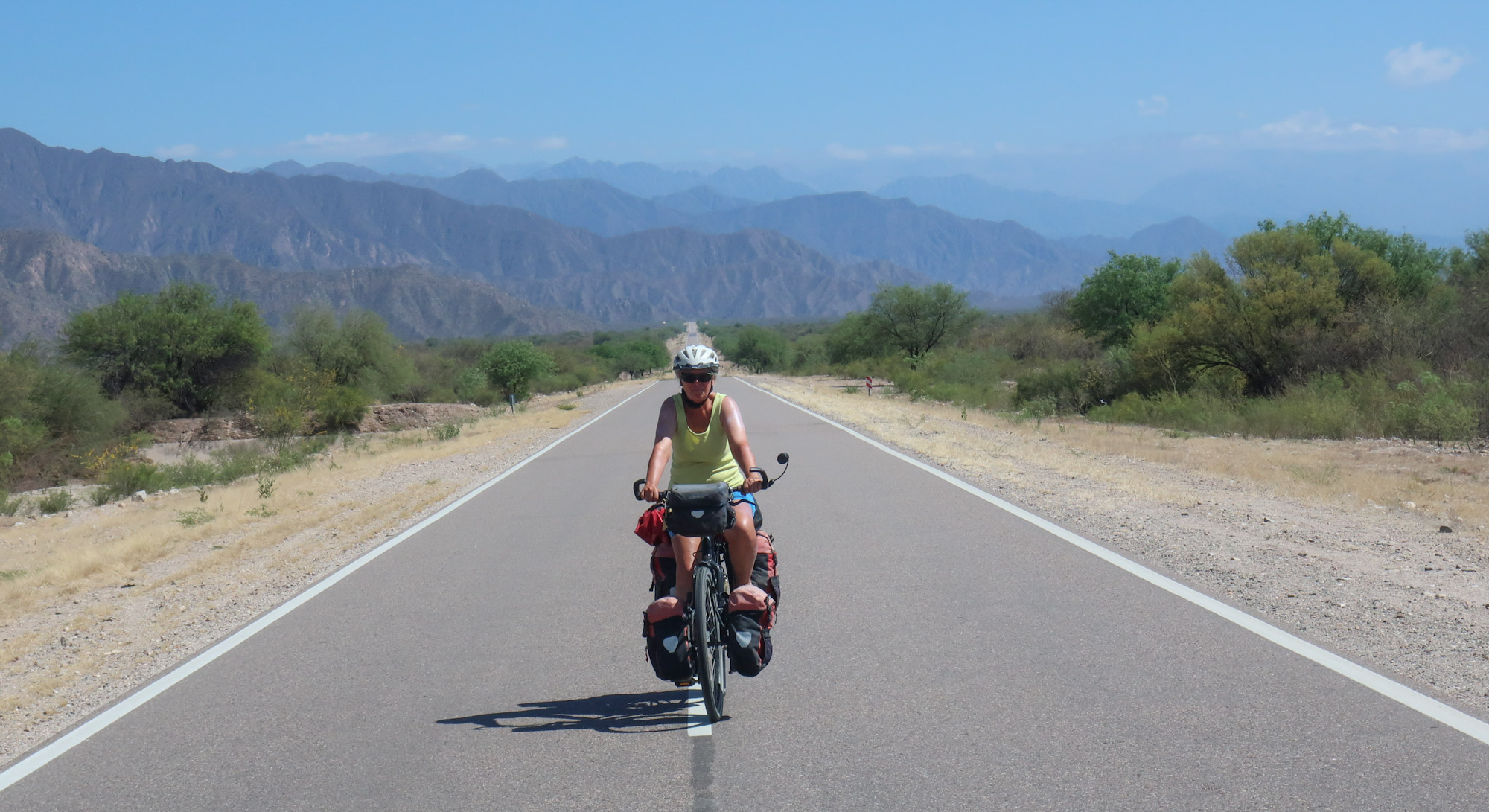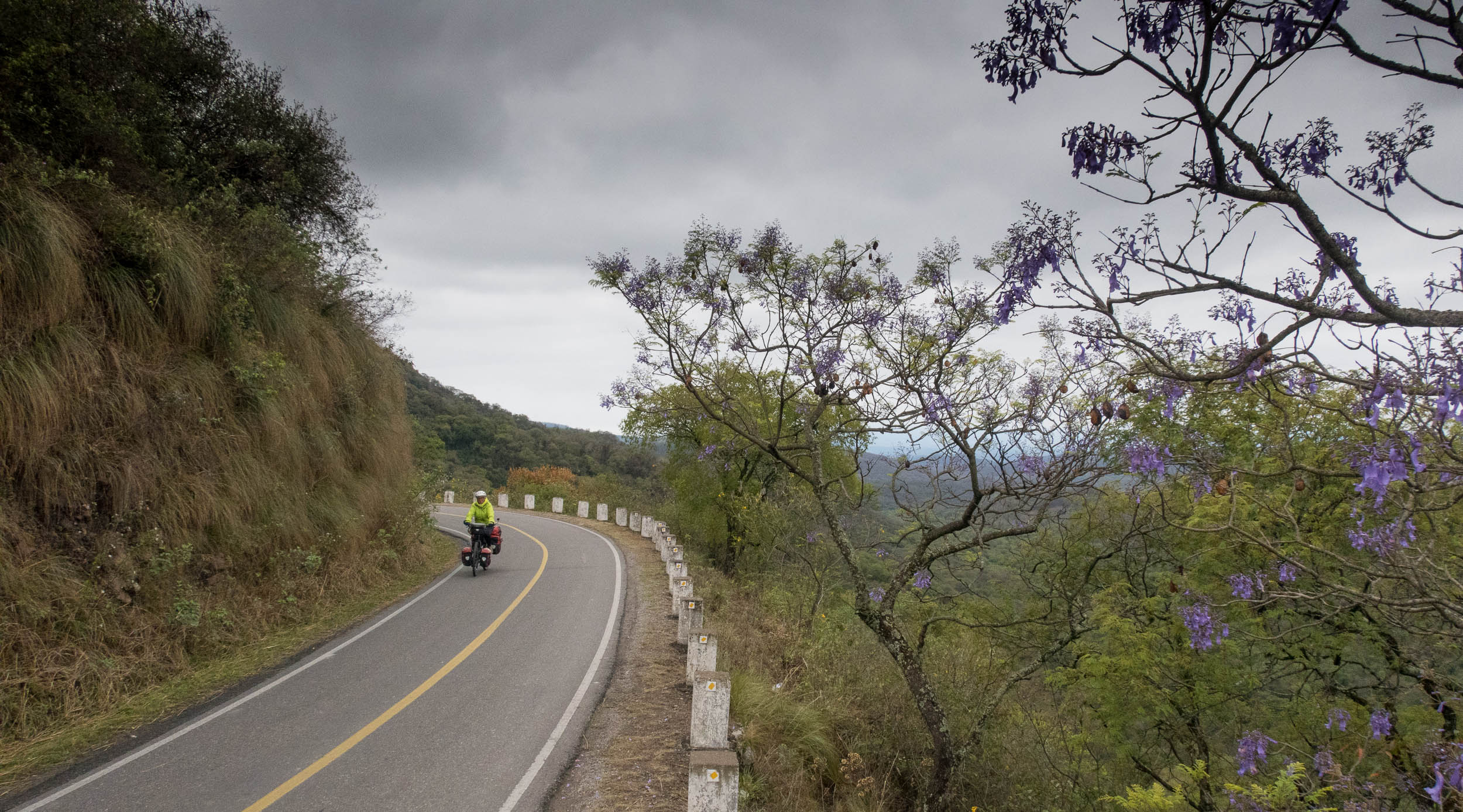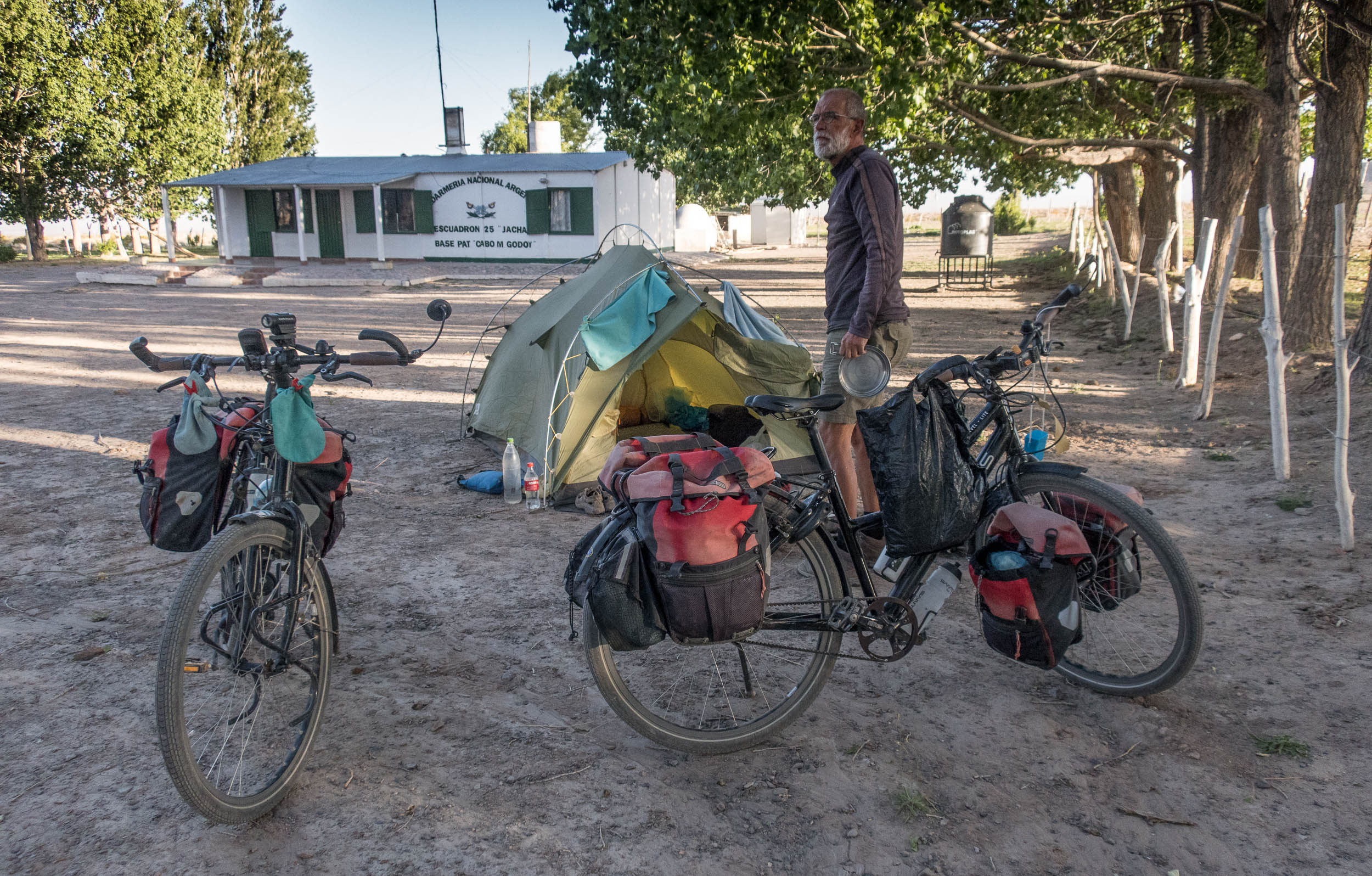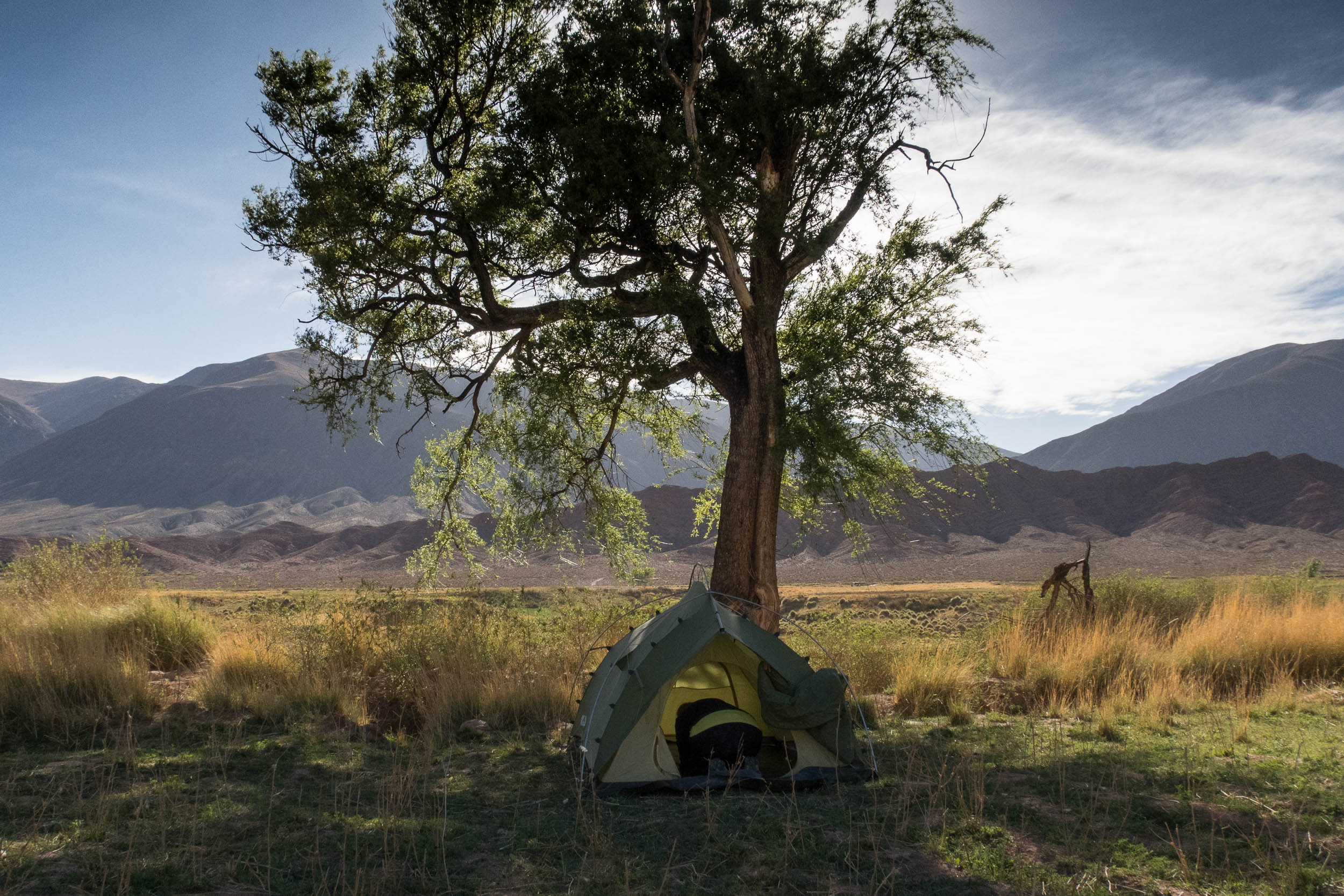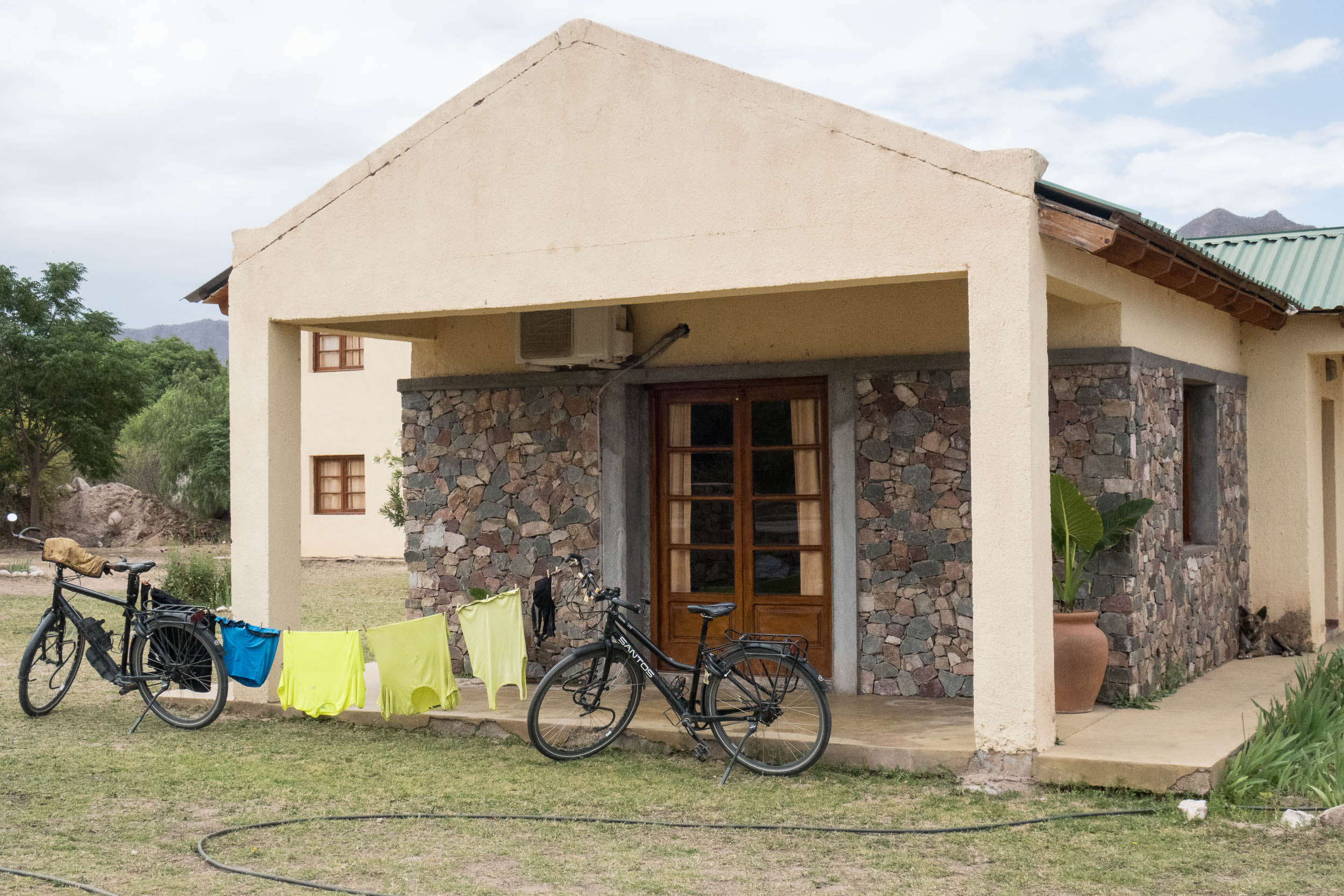Maps
We used two printed maps mostly to have an overview of our route. The Nelles Argentina North (1:2.500.00) and the Freytag & Berndt map of Argentina (1:1.500.000).
We also used the Open Street Map on our Garmin Oregon GPS and occasionally the OSmand, off-line map app on an Android smartphone. There are not that many roads where we traveled so getting lost is not a big issue. Navigation is mostly useful in cities. The only ‘big’ cities we visited were Salta and Mendoza. To prepare our trip we used Google Maps and Google Earth.
Books
We used the Rough Guide for general travel information and accommodation options.
Internet and email
Every campsite, hotel and other accommodation we stayed offered a reasonable WIFI connection for guests. We were able to maintain our blog while travelling and even upload small video clips to Youtube. In the north west there is an optic fiber network in many towns and villages. Municipalities often supply free open WIFI connections on the main plaza.
Money (ATM’s)
ATM are everywhere in Argentina and Paraguay. We never had problems withdrawing cash but using our Visa card we were limited to 1500 pesos per withdrawal. The cost per withdrawal was also quite high (5 euro). Please note that there are almost always long lines with people waiting to get money. Not in a hurry: get your cash during the siesta hours in the afternoon.
Language
Going to South America means that you will have to speak at least some basic Spanish. It is rare to find persons (outside the tourist trade) that speak English or any other foreign language. Using Google Translate with off-line dictionaries can be very useful.
Roads and traffic
The highways 12 (south of Iguazu) and 11 (north of Resistencia) were very busy with cars, trucks and buses. Our route page gives some information on how to avoid these routes. The national highways in Paraguay were less busy and always had a good shoulder. Minor roads in Paraguay are always dirt roads, changing in red mud after rain. On the ‘puna’ north west of Salta we did not encounter busy roads. Actually our whole route from Salta to the north and then from Cafayate to Mendoza was extremely low on traffic.
Water and other drinks
Although it seems that tap water is safe to drink bottled water is available everywhere. Beer is also available everywhere and mostly comes in large one litre bottles. Soft drinks in even larger bottles of 1,5 l. No problem, we were always thirsty.
Food
Some times we had dinner at restaurants but often we cooked our meals ourselves. Supermarkets and shops outside big cities (Salta, Mendoza) sell a very limited selection of vegetables and other items. To be able to prepare our own meals we often stayed in ‘cabanas’, apartments that almost always have a fully equipped kitchen. Eating out in small towns means pizza or steak. Most restaurants open at 9 pm or even much later.
Climate and weather
In the north east where our trip started we had many hot and humid days with temperatures around and above 30 degrees Celsius. Up on the altiplano (the ‘puna’ at 3000 – 5000 m) night temperatures were just above zero and days never hot. From Cafayate to Mendoza we had many pleasant days with day temperatures between 25-30 degrees and occasionally some very hot days at 40 degrees or more.
Where to stay: Camping
There is a well established camping culture in Argentina. We camped rarely on these official campsites. Most of the times we opted for free camping. All the exact locations of our free camping spots are marked on the route map.
Where to stay: Hotels and more
Every town in Argentina and Paraguay we stayed had several hotels and hosterias. We preferred to stay in so called ‘cabanas’. This is fully equipped accommodation with generally a full size kitchen, one or more bedrooms and a living room. Prices are similar to a middle class hotel room. In Salta and Mendoza we used AirBnB to find a nice apartment for a couple of days.
Questions?
If you still have some questions left do not hesitate to send us an e-mail.
